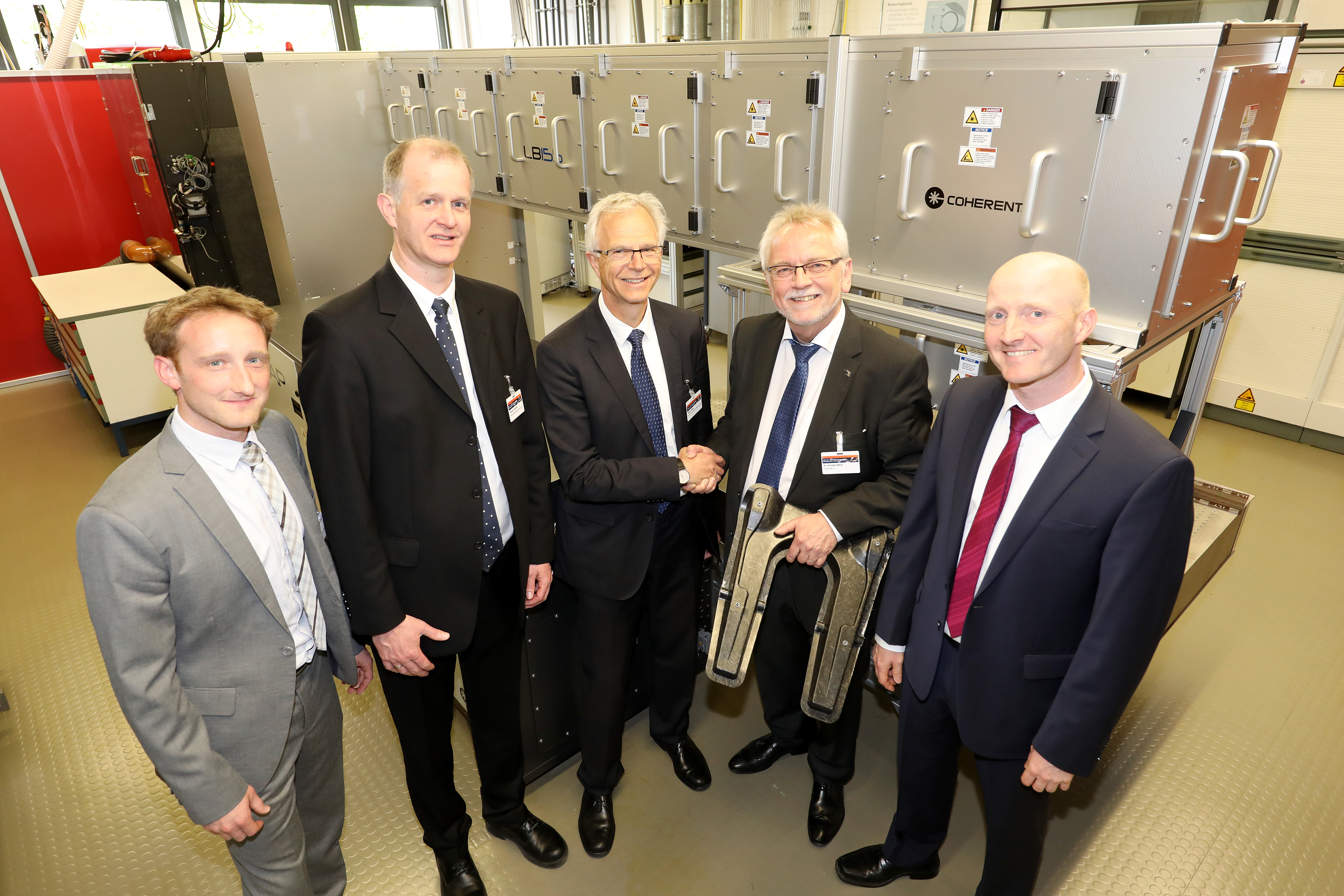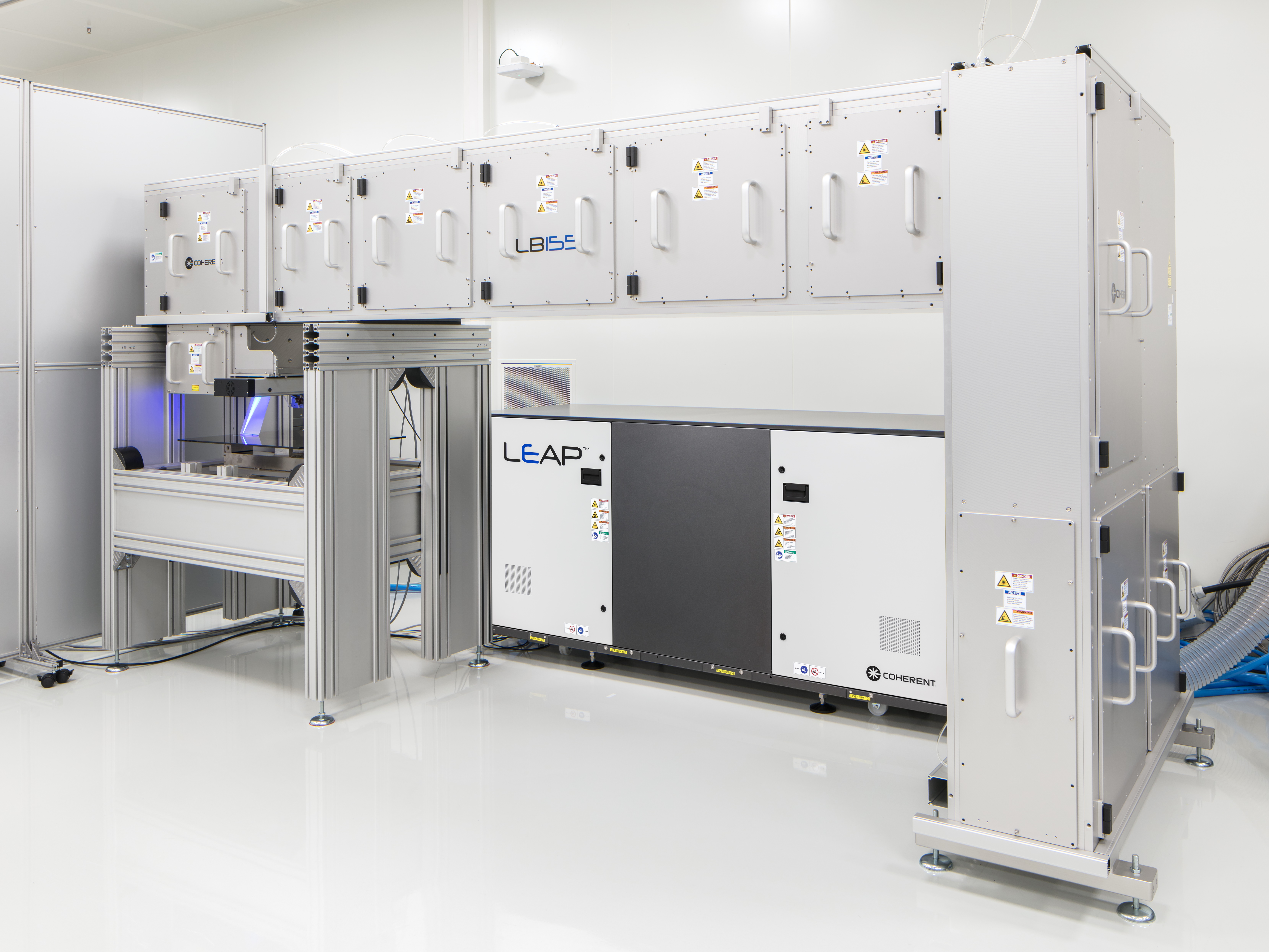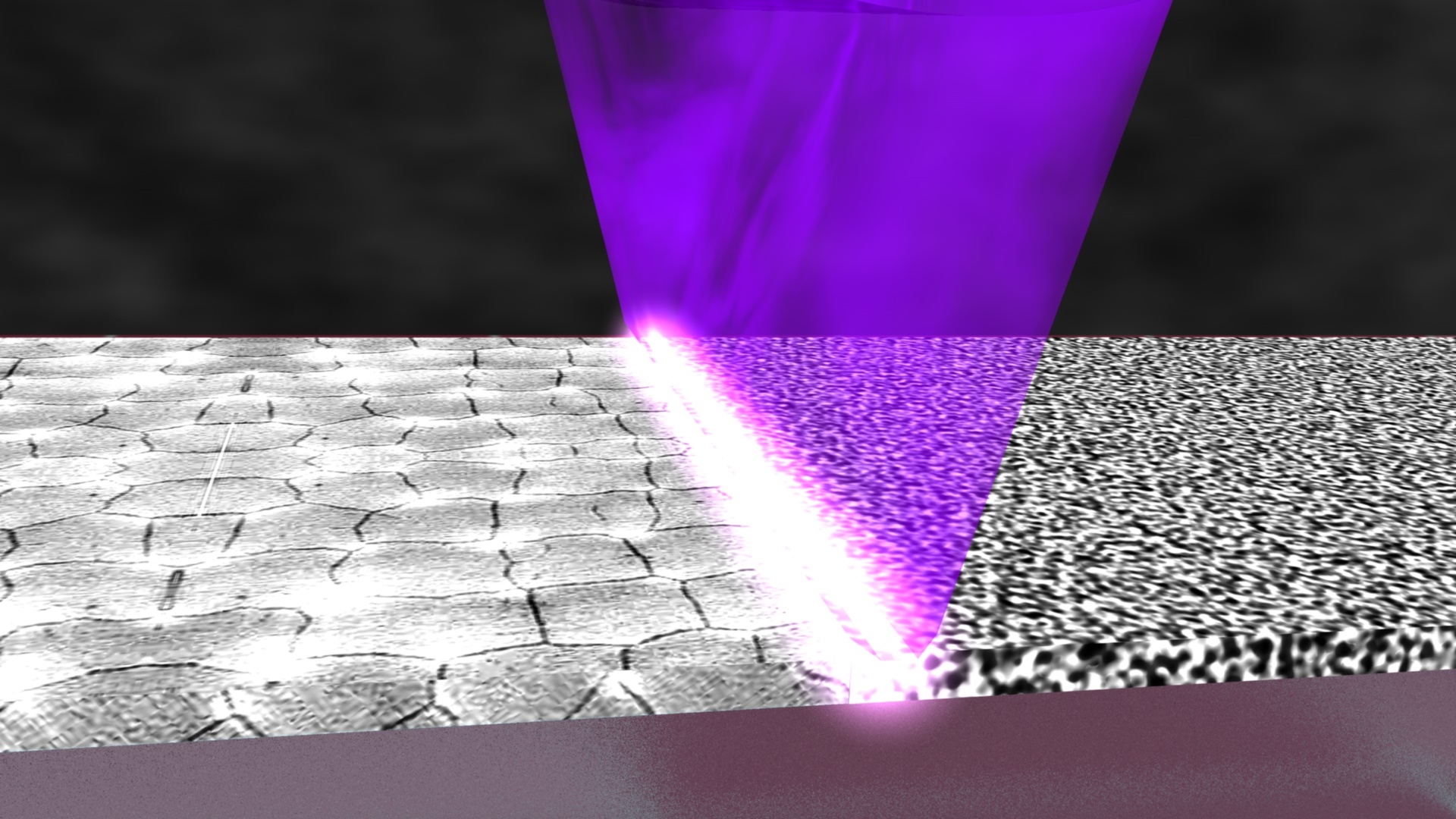High-performance excimer laser system for Fraunhofer ILT
More functionalities: Microstructuring large surfaces with a UV-laser system
Coherent operates a high-performance excimer laser system for processing large surfaces in partnership with the Fraunhofer Institute for Laser Technology ILT in Aachen, Germany. Using the short-wave laser system, the partners aim to develop new methods for carefully controlled surface processing. Preparation of CFRP adhesive surfaces is just one example of the numerous potential applications.



In the last few years, the rapid growth in display manufacture for mobile devices has ushered in a considerable renaissance for excimer lasers. Operating in the UV range, they allow precise modification of silicon as well as ablation of ultra-thin polymer layers using the laser lift-off process. However, the potential applications of this laser technology are far from exhausted.
In a collaborative project spanning several years, Coherent and Fraunhofer ILT plan to develop novel procedures with the excimer laser. To this end, Coherent has provided a research team from Fraunhofer ILT with a line beam system.
The system’s laser line is 155 mm long, 0.3 mm wide, and its stabilized UV output at a wavelength of 248 nm is more than 150 W. A masked imaging system can also be connected, if required. UV radiation has a short wavelength and each laser pulse can reach an energy of more than 1 J, allowing both removal of various materials at a micrometer resolution and rapid, selective processing of layer systems in the micro- and nanometer range. “No other system can match this combination of precision and processing speed,” says Dr. Ralph Delmdahl, Coherent’s Product Marketing Manager.
New laser processes also suitable for lightweight construction
“Our goal is to qualify new applications and new materials that can be subsequently scaled up for industrial production,” explains Dr. Arnold Gillner, Head of Ablation and Joining at Fraunhofer ILT. One of the first areas of focus is processing of fiber composites. The excimer laser, for instance, can be employed for carefully controlled and precise preparation of carbon fiber reinforced plastic (CFRP) adhesive surfaces. Another application is large-surface removal of release layers in the production of CFRP components. This might have as much potential in aviation as it has in shipbuilding. Targeted modification of surfaces is a further goal of the cooperation. Such modification provides technical components with additional functionalities, which could otherwise be manufactured only with the aid of expensive coatings.
Crucially, the low penetration depth of the UV radiation enables the surface to be functionalized at the same time as maintaining a very low heat input. This makes the excimer laser, due to its very short wavelength, superior even to new ultrashort pulse lasers. The potential applications are extremely diverse. In addition to evaluating procedures for processing strategies, the laser can also be used to investigate novel materials for their machinability. One possible application is the efficient production and modification of nanoscale graphene layers, in which the short wavelength of 248 nm – and the associated high photon energy – plays a decisive role.
Research projects like these indicate that Coherent and Fraunhofer ILT are looking to the long-term in their collaboration. Both partners can use the system jointly with their customers for projects. This provides small and medium-sized companies, in particular, with a potential technological basis to develop new products with innovative functionalities.